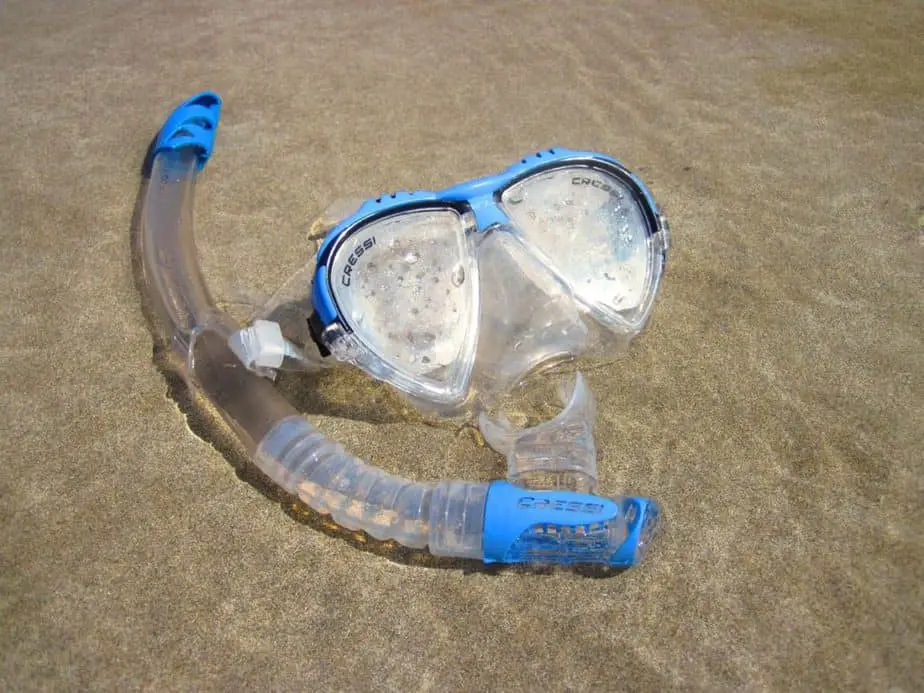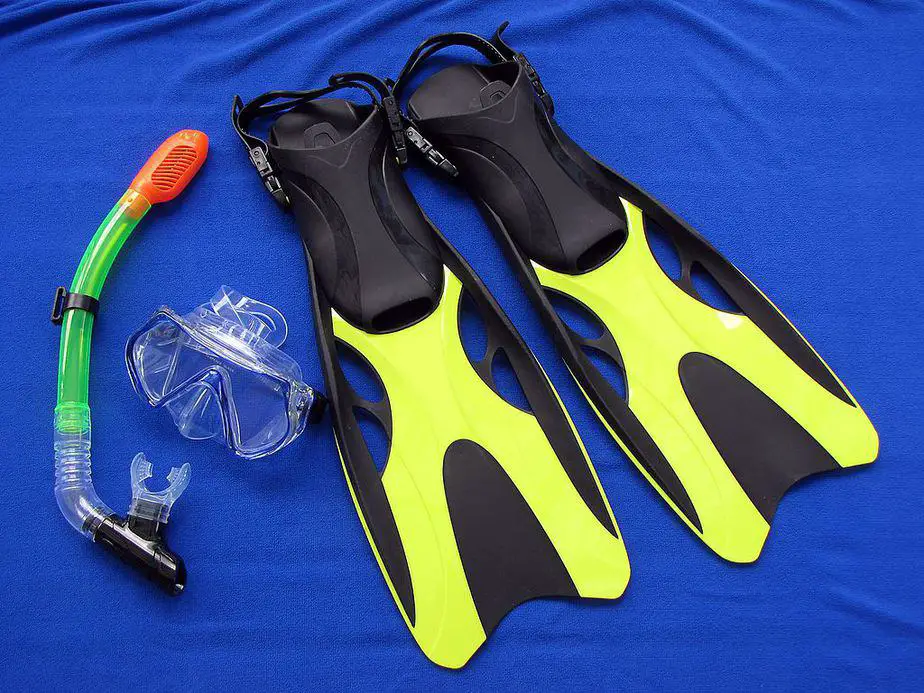Just like any equipment that you plan to use for a long time, especially ones that are constantly exposed to the elements, your snorkel gear will need lots of maintenance over the years. Exposure to saltwater can lead to mold and bacteria growth if it is not properly cleaned.
Knowing how to clean your snorkel gear will help them last for years and function just as well as the day you bought them. Furthermore, proper maintenance and storage will prevent mold and bacteria from spreading and physical damage from occurring. In this article, we will go over the best ways to clean and maintain your snorkeling gear so that you can maximize your investment and stay safe in the water.
How to Clean Your Snorkel
The snorkel is what you’ll be putting in your mouth and breathing through, so it makes sense that you should put significant effort towards cleaning it, particularly if you’re renting your snorkel gear. Among snorkelers, the three most common effective cleaning methods are as follows:
Option 1: Bleach and Warm Water
When water is not cleaned out of any equipment, it will eventually result in the development of mold. Breathing in mold particles can result in respiratory symptoms, and there are already enough dangers just being out in the water, so let’s work to eliminate this one. The first method to clean your snorkel is the bleach and warm water method.
Bleach is an effective solution to remove mold from non-porous surfaces such as the snorkel. Since bleach produces harsh fumes, you should do the cleaning in a well-ventilated area and the bleach must be diluted with water.
- Dilute the bleach in a ratio of one part bleach to 10 parts water (have 10 times the amount of water compared to bleach, so if you use one cup of bleach then mix it with 10 cups of water). Mix the solution thoroughly.
- Submerge the snorkel while wearing gloves in this bleach solution and make sure the bleach rinses every nook and cranny.
- Let sit in the bleach solution for 30 minutes, particularly the breathing tube (J-tube), to ensure the bleach kills all of the mold.
- Remove the snorkel from the solution and thoroughly rinse with warm water. In the event that there are still bits of dirt or debris leftover, repeat step two.
- Wipe clean and let air dry.
Option 2: Vinegar and Warm Water
Unlike bleach, vinegar is a natural acid that is non-toxic and capable of eliminating most forms of mold. Since it is non-toxic, you do not have to worry about toxic fumes like with bleach. Cleaning your snorkel and scuba gear with vinegar is a safe way to get rid of mold.
- Mix equal parts vinegar with water. You could even exclusively use vinegar without diluting it at all, however water can be added to save on the amount of vinegar used.
- Submerge the snorkel in the vinegar, making sure that all surfaces have been exposed to it.
- Let sit for 30 – 60 minutes.
- Remove the snorkel and rinse with warm water. If there’s a strong vinegar smell, don’t worry about it because it will naturally clear on its own within a few hours.
- Dry with a towel and leave out to air dry.
Option 3: Dish Detergent and Warm Water
If you’re not a fan of putting your gear in bleach or vinegar solution, then you can try using antibacterial dish detergent. With this option, you may need to put in more effort removing grime or debris stuck in difficult-to-reach areas, as dishwasher detergent is not nearly as powerful as bleach. Keep in mind, detergent doesn’t kill mold. However, on non-porous surfaces, detergent is capable of scrubbing off mold, leaving behind a clean, mold-free surface. Here’s how to do it:
- Mix dish detergent with warm water, mixing until bubbles form.
- Place the snorkel in the detergent water for 30 minutes. Afterwards, use a soft wash cloth and wipe away any remaining grime or dirt residue.
- Let sit for another 30 minutes in the detergent water to ensure there are no more residue left.
- Rinse with warm water.
- Wipe clean and let air dry.
How to Clean Your Snorkeling Mask
For the First Time (After Purchase)
Before you use the mask for the first time, we recommend doing a special first-time cleaning routine. All you need are some common household items: a non-abrasive toothpaste, a soft wash cloth, and a toothbrush.
- Apply a few drops of toothpaste on both the inside and outside of the mask lens.
- Gently spread the toothpaste using either the toothbrush or soft wash cloth. If your mask has a glass lens, use the toothbrush. If it has a plastic lens, use the soft wash cloth. This will minimize the chances of damaging the lens, and is also the reason why we recommend using a non-abrasive toothpaste.
- Thoroughly rinse the mask under warm water to remove any leftover residue.
- Dry the mask with a towel and leave out to completely dry. It would be quite ironic if the water used to clean the mask ended up causing mold to grow.
It is important to do this cleaning process for new masks because most snorkel masks are manufactured with a thin oily film on the lens which protects the masks when they are shipped around the world. Unfortunately, this film can trap moisture and lead to fogging which is why we want to get rid of it. Later on, you can also apply a defogging solution to the mask for another method to prevent fogging.

Cleaning a Mask after Snorkeling
After each snorkeling session, you’ll want to clean your gear, including your mask. It’d be a miracle if you managed to go on a snorkeling excursion and leave without an abundance of sand, grime, or other types of debris stuck inside the mask and snorkel.
The first thing you’ll want to do is rinse the mask with water to get rid of some of the debris. You’ll want to do a more thorough cleaning job using a mix of warm, soapy water afterwards to remove the rest of the tiny specks of debris hiding on the mask lens.
Afterwards, thoroughly rinse the mask with clean water and get rid of all of the soap and grime from the mask. Using a gentle microfiber cloth, dry the mask and leave it out in the open for any spots you missed to completely air dry. A wet mask is a hot-spot for bacteria to grow and for mold to develop, so you have to dry your mask to the best of your ability each time you clean it.
How to Clean Your Snorkel Fins
Cleaning your fins is a lot more straightforward than cleaning your snorkel and mask. Simply use warm, soapy water to remove sand and other debris from the fins using your hands. Refrain from using any abrasive cleaning tools, such as a brush or a scrubber, as these can damage the delicate fins.
Snorkeling equipment is very delicate, and even small abrasions can eventually lead to permanent damage, as well as places where sand and debris can get trapped in. Make sure to thoroughly rinse the snorkel fins with clean water, and dry with a soft wash cloth or microfiber cloth so as not to scratch it.
General Maintenance Tips
Other than cleaning, maintaining your gear is a crucial part of increasing their life span. You want your equipment to last for years, and not have to buy a new set after just a handful of snorkeling excursions. The better kept they are, the less overall cleaning you’ll need to perform each season. Furthermore, you will be safer when snorkeling with gear that is kept in top condition. Here are some ways to keep your gear in perfect working order:
Let the Snorkel Air Dry
It’s not enough that you clean your snorkel, but you also have to allow it to dry before storing it for next time. If water is allowed to remain in the tube and get stagnant, then mold will undoubtedly grow when you store it. You can notice this when the plastic tubing starts to get discolored extremely quickly, and not from wear and tear.
To accommodate this, many snorkelers carry their gear around in a mesh bag, since it lets air circulate through your equipment so that they can dry quickly.
Rinse Off All Residues
Again, cleaning can go very wrong if you don’t properly rinse off any cleaning residues. Often, there will be some residue left behind after the first rinse that you will need to rinse once or twice more. Why do you have to do this? Well, unless you like to taste bleach or dish detergent, doing this will also ensure the plastic doesn’t get degraded by the chemicals.
Storage
Even when you’re not using your snorkeling equipment, treat them with care, especially the mask. The general recommendation is that the snorkel, mask, and fins be stored separately so that they don’t end up scratching each other. Before storing, make sure each piece of gear has had a chance to completely air dry. Finally, store them in a mesh bag in a cool but dry place to avoid damage from moisture or sun exposure.
Conclusion – Why It’s Important to Clean Your Snorkel Gear
Staying safe with snorkeling isn’t limited to just the time spent in the water, but also outside of it by thoroughly cleaning and removing mold and bacteria from your used gear. Learning how to clean and maintain your equipment is vital for any snorkeler. Even though salt water has some natural antibacterial properties, it can still lead to the development of mold.
By following the cleaning and maintenance tips described in this guide, you should be able to help your equipment last for as long as possible. Replacing damaged gear is annoying and can get expensive fast, so why not take better care of them? Furthermore, by dealing with the clean-up process at home and keeping your gear in top condition, you can rely on them to provide a completely stress-free snorkeling experience when you’re having a vacation.

